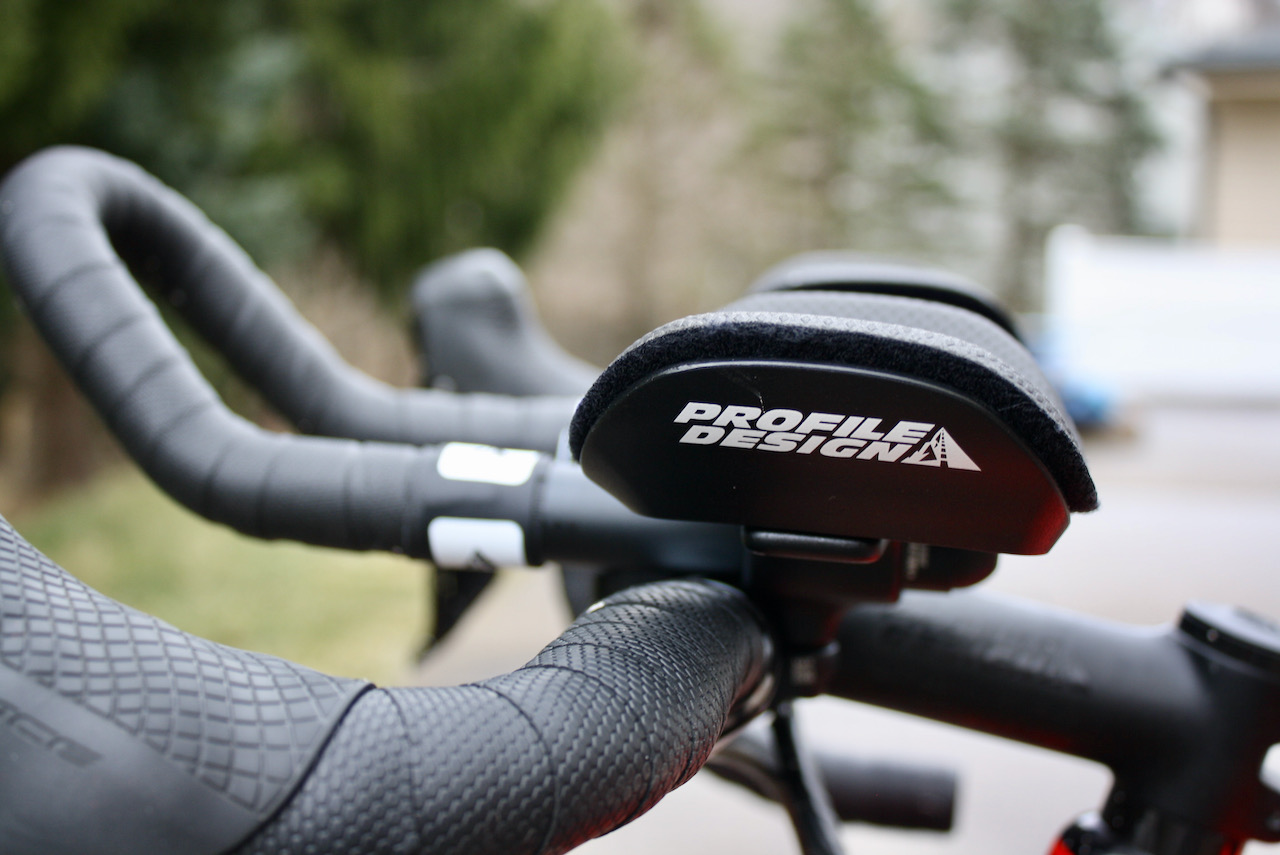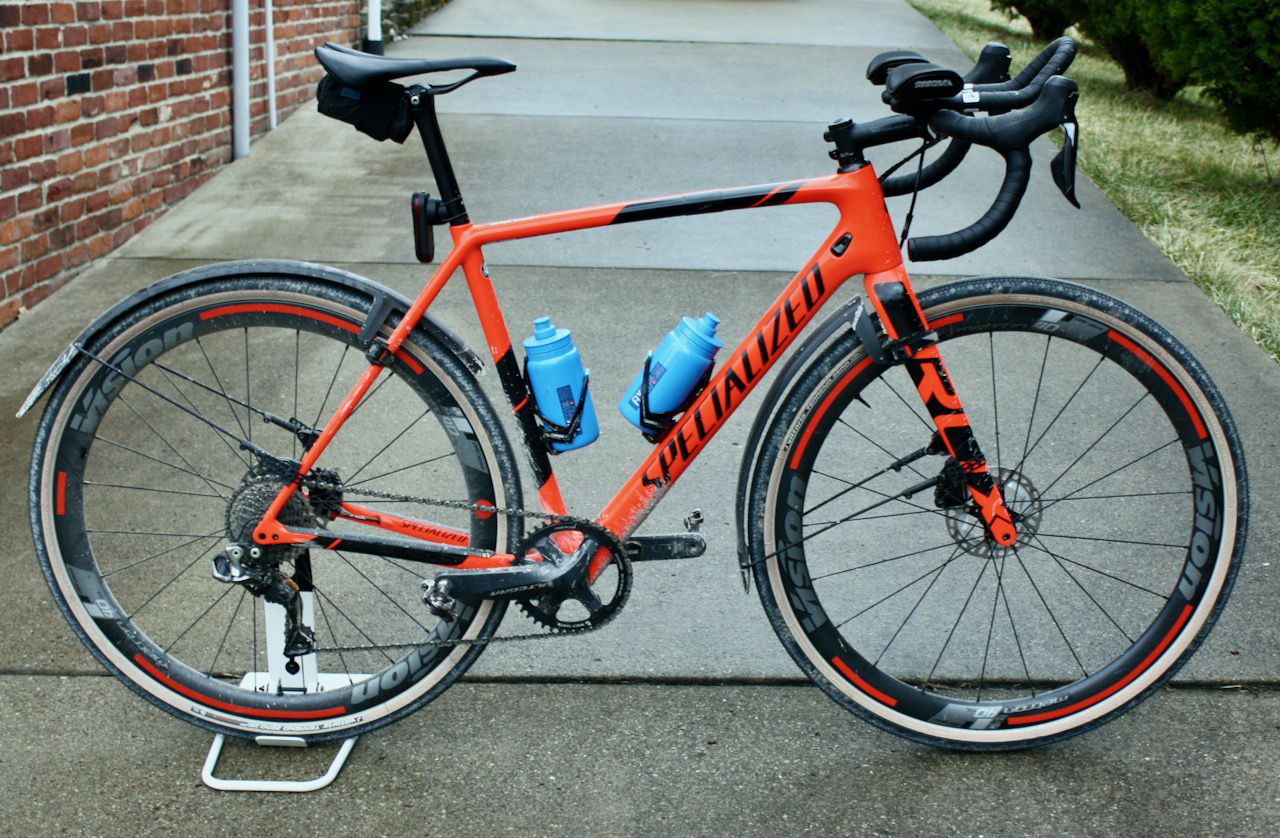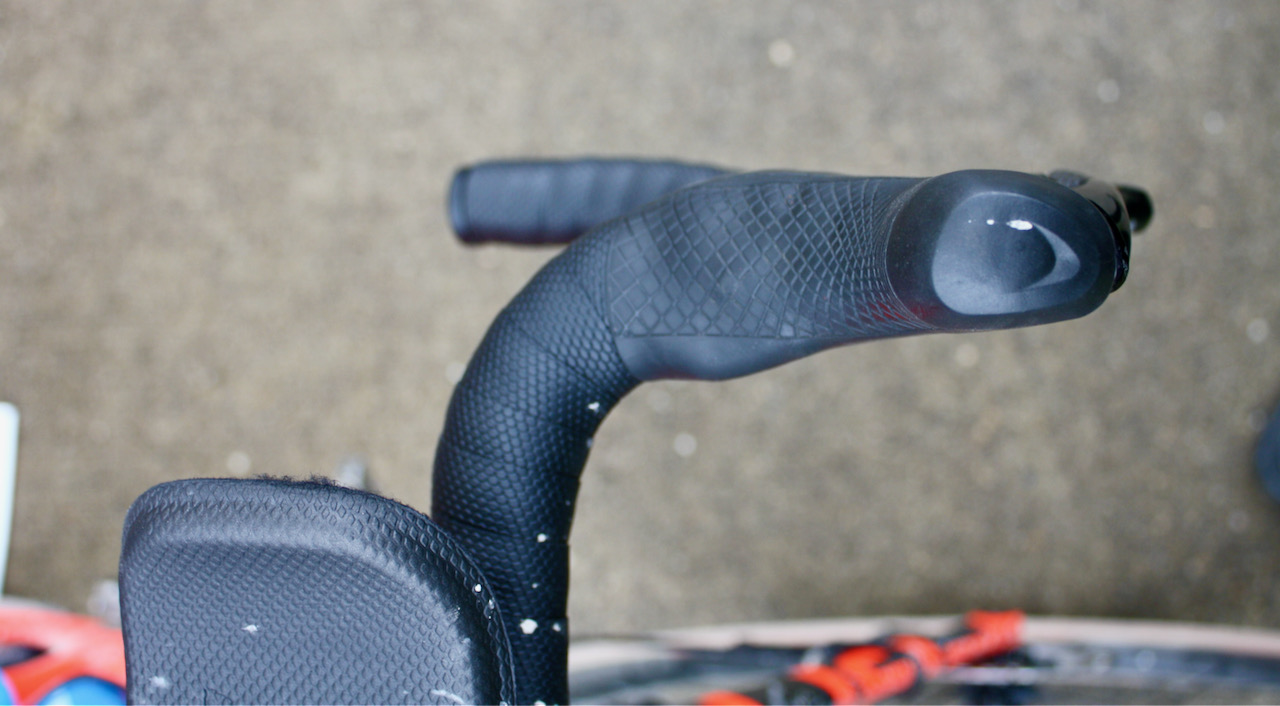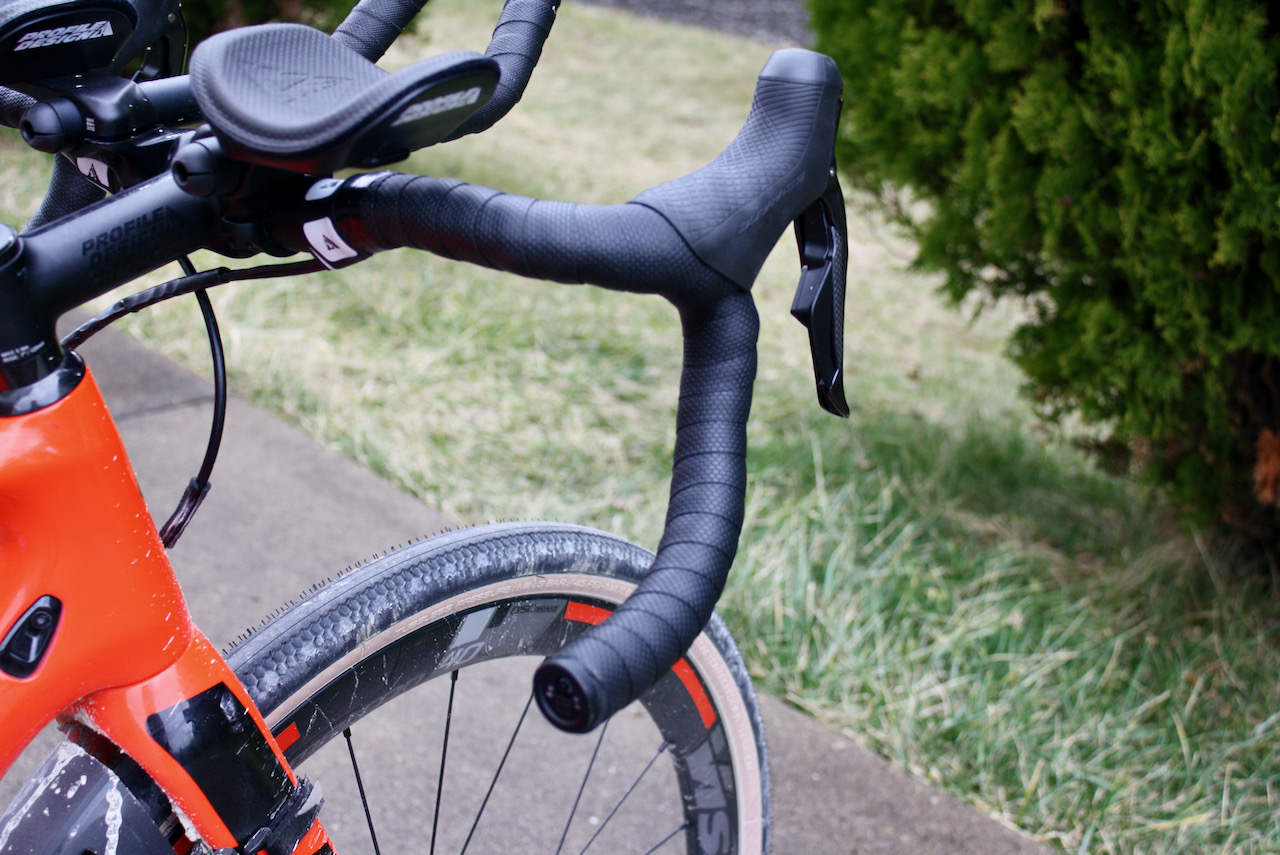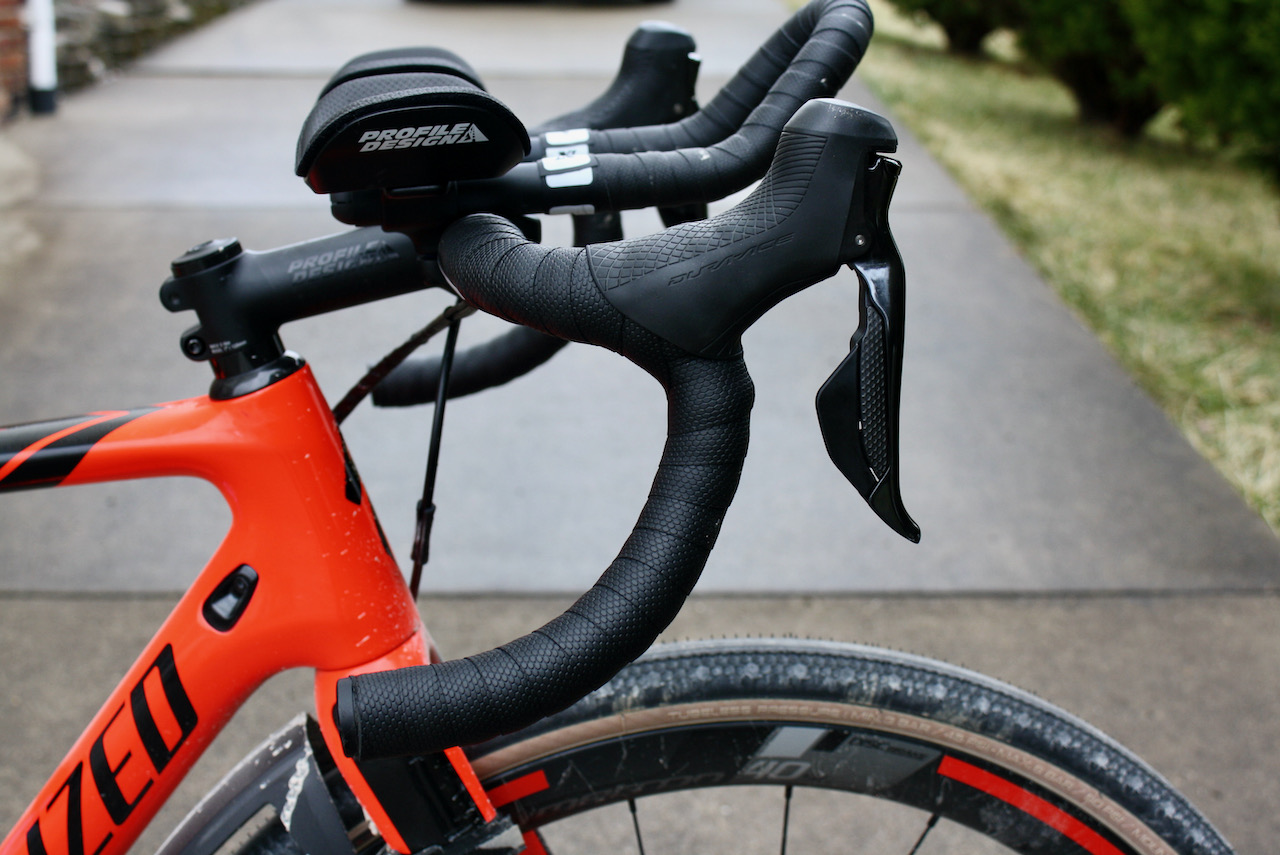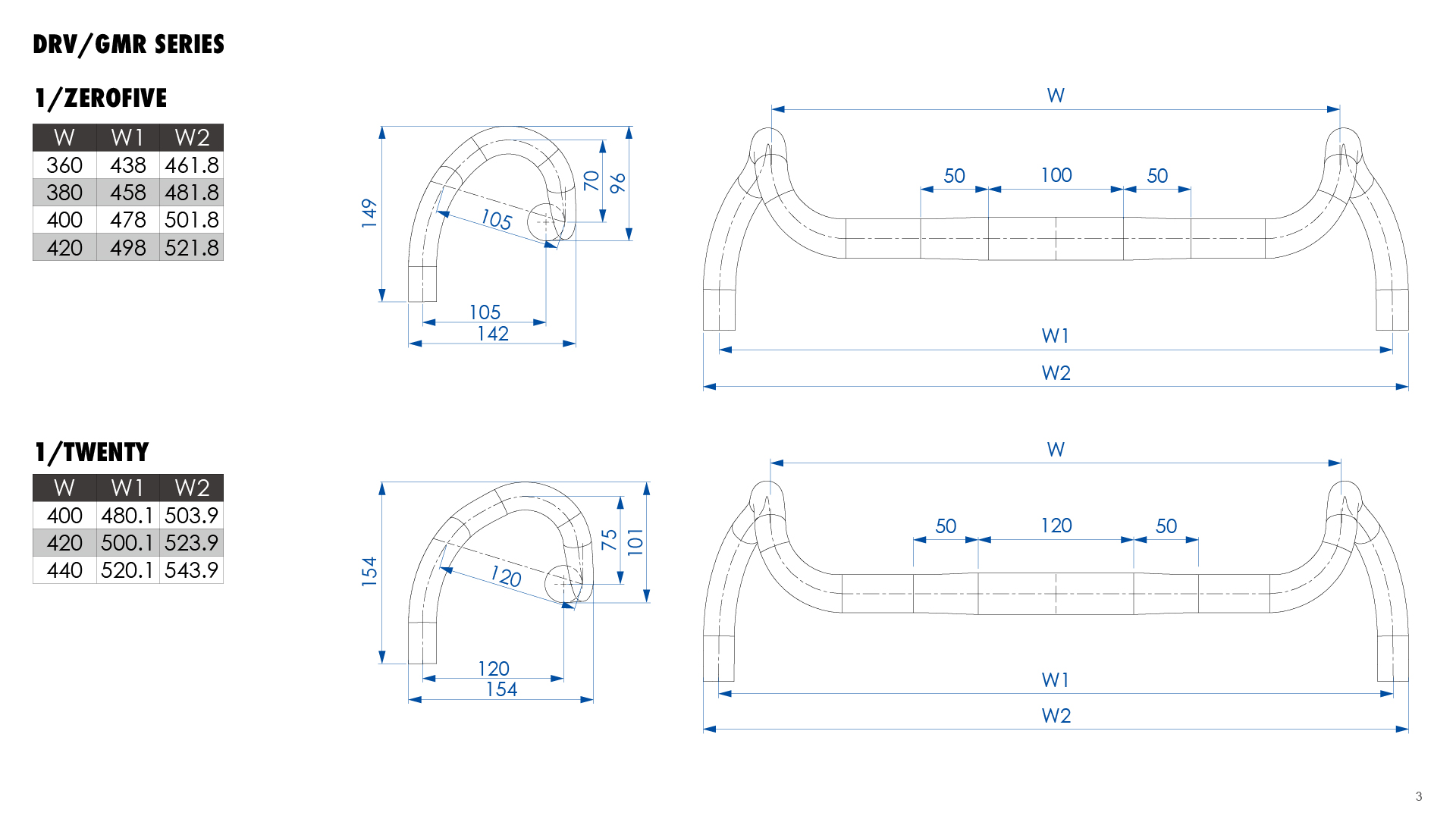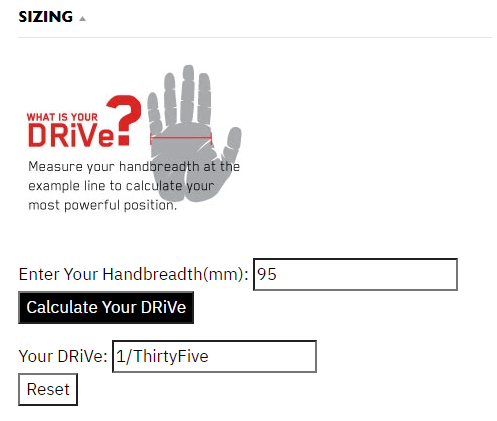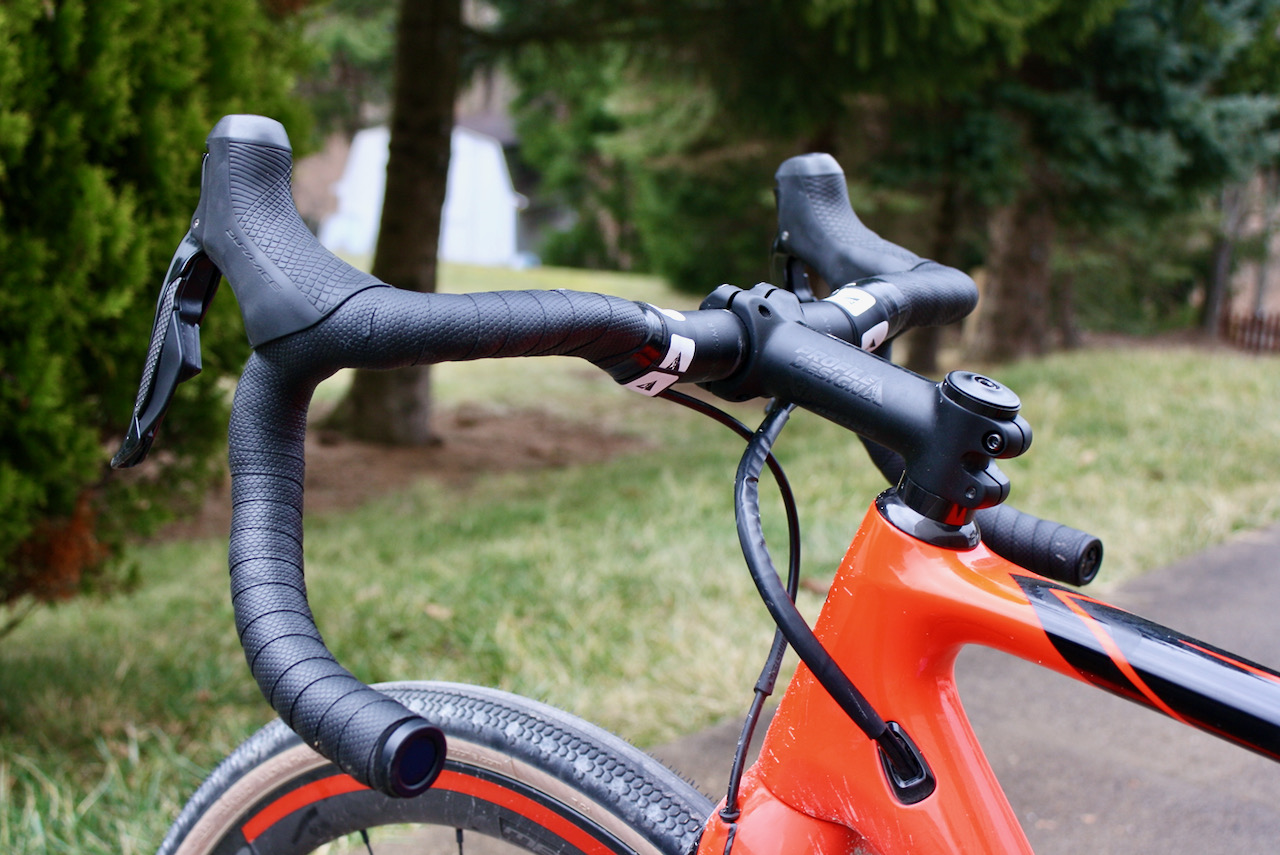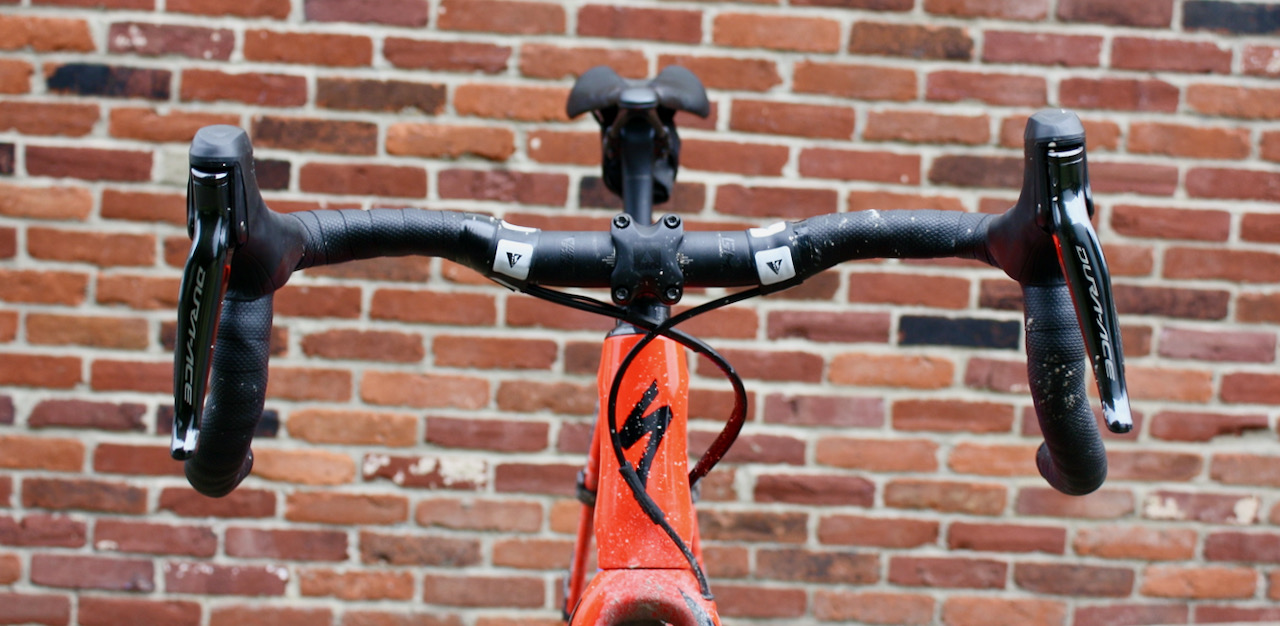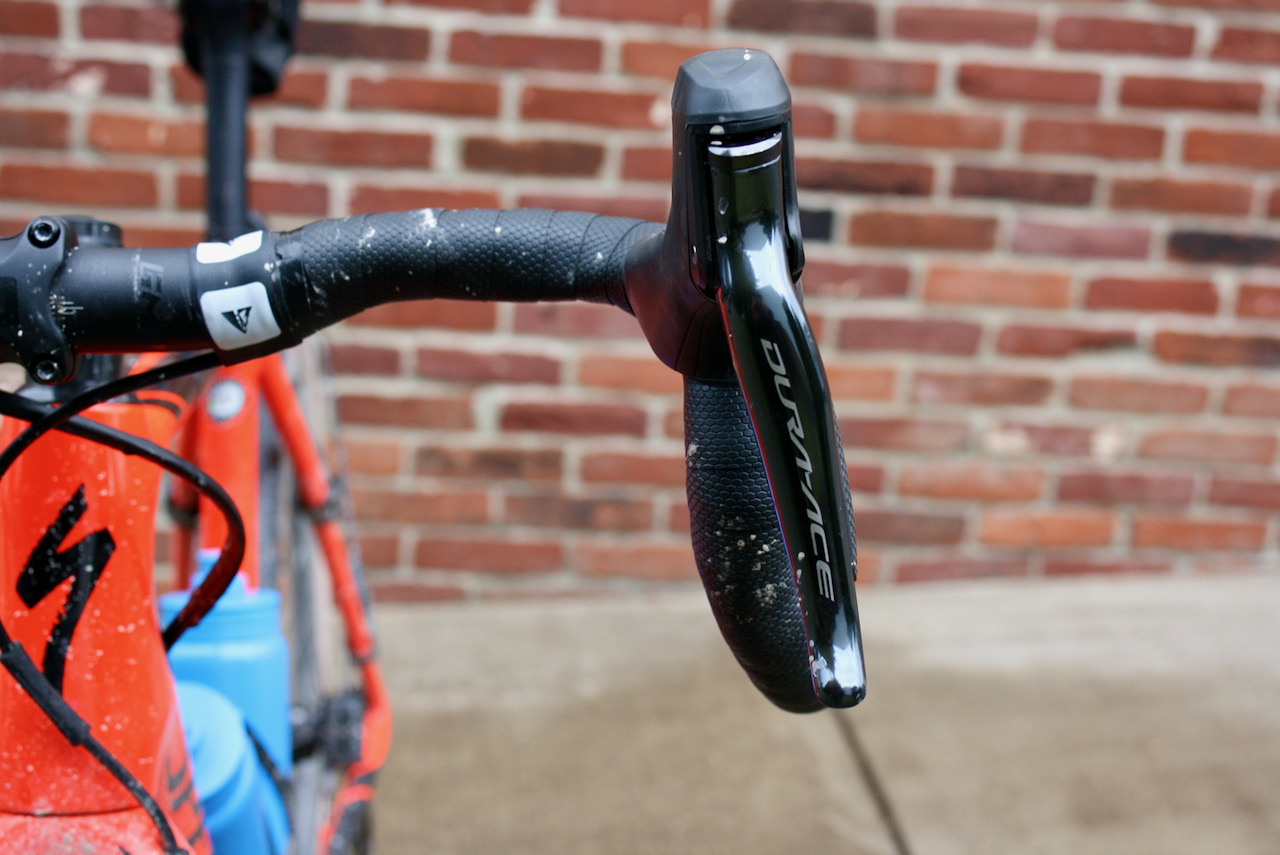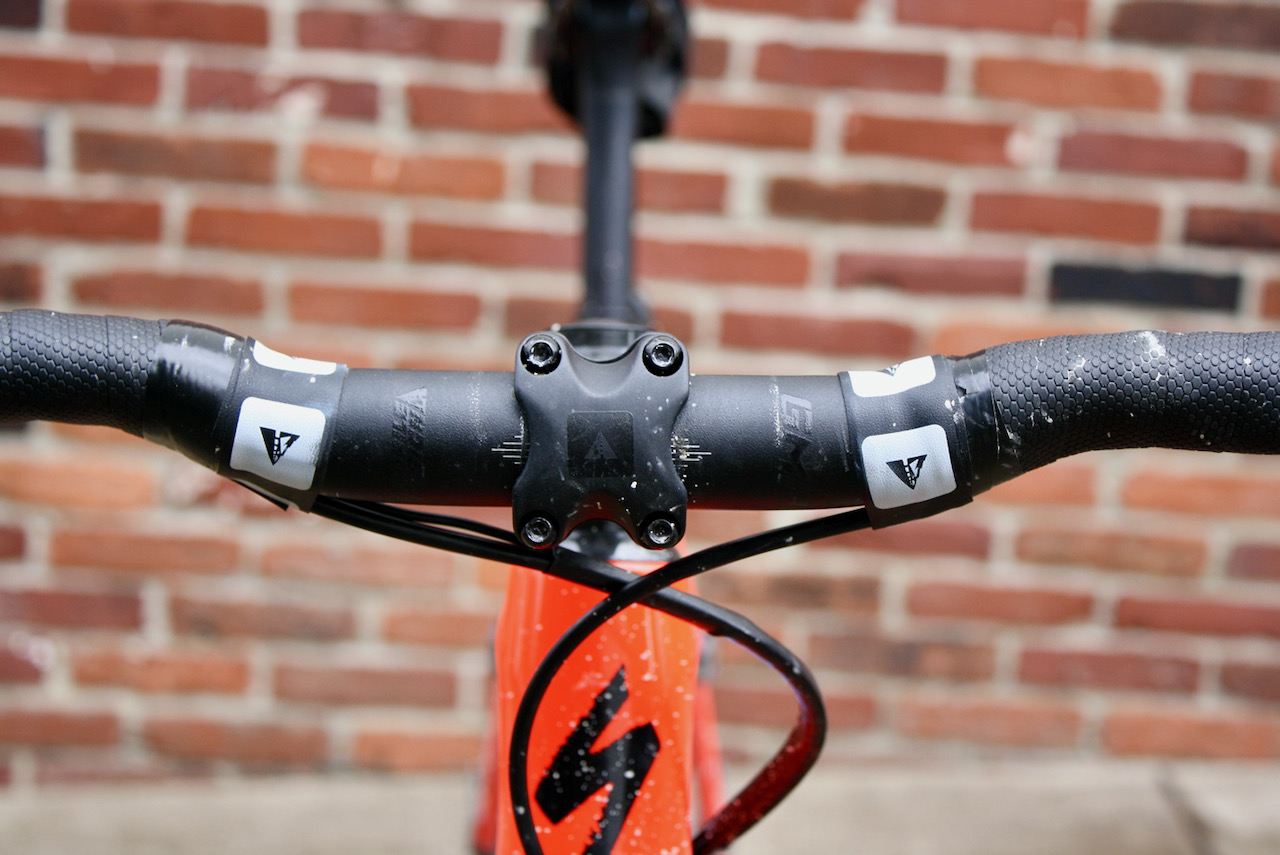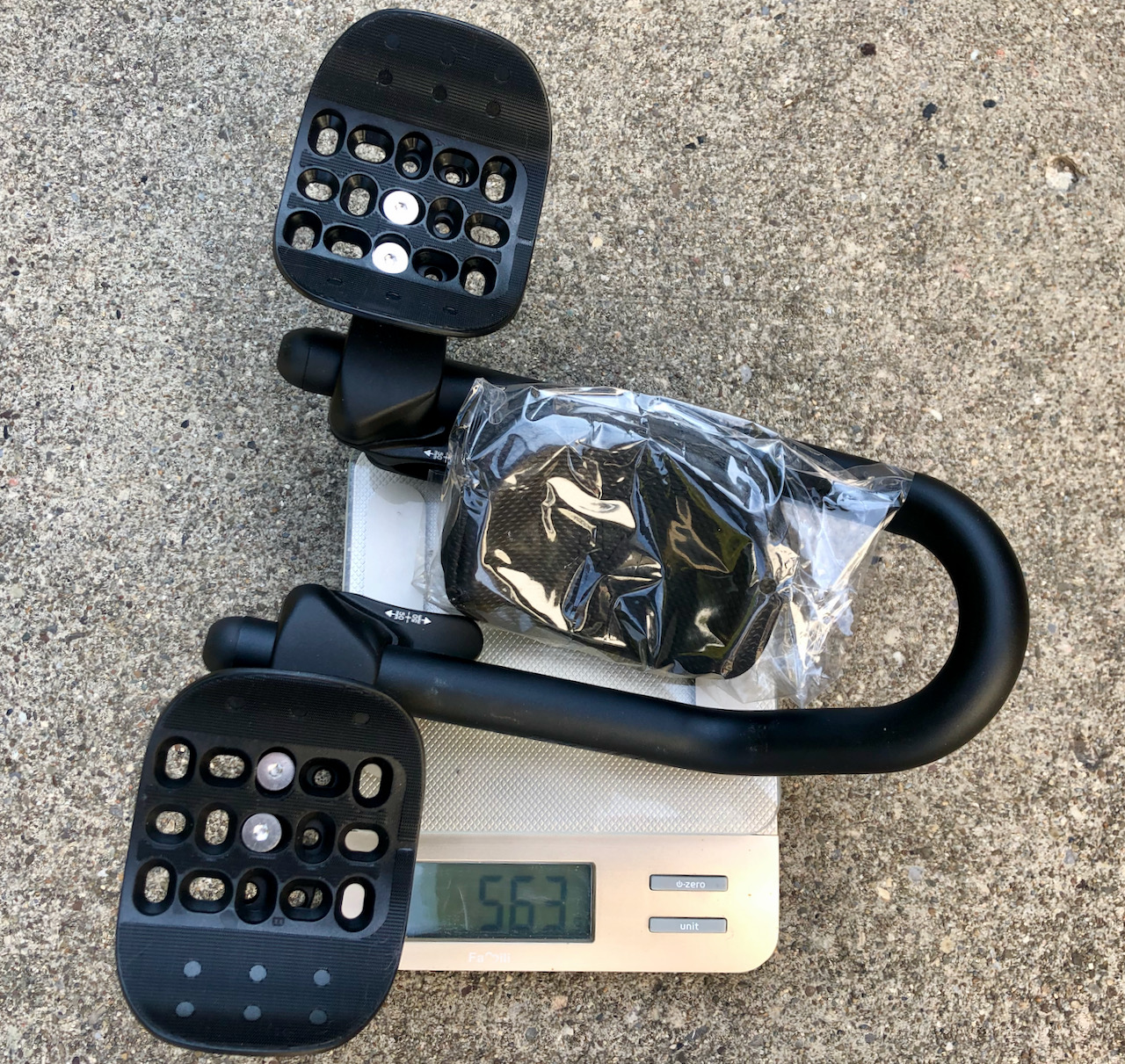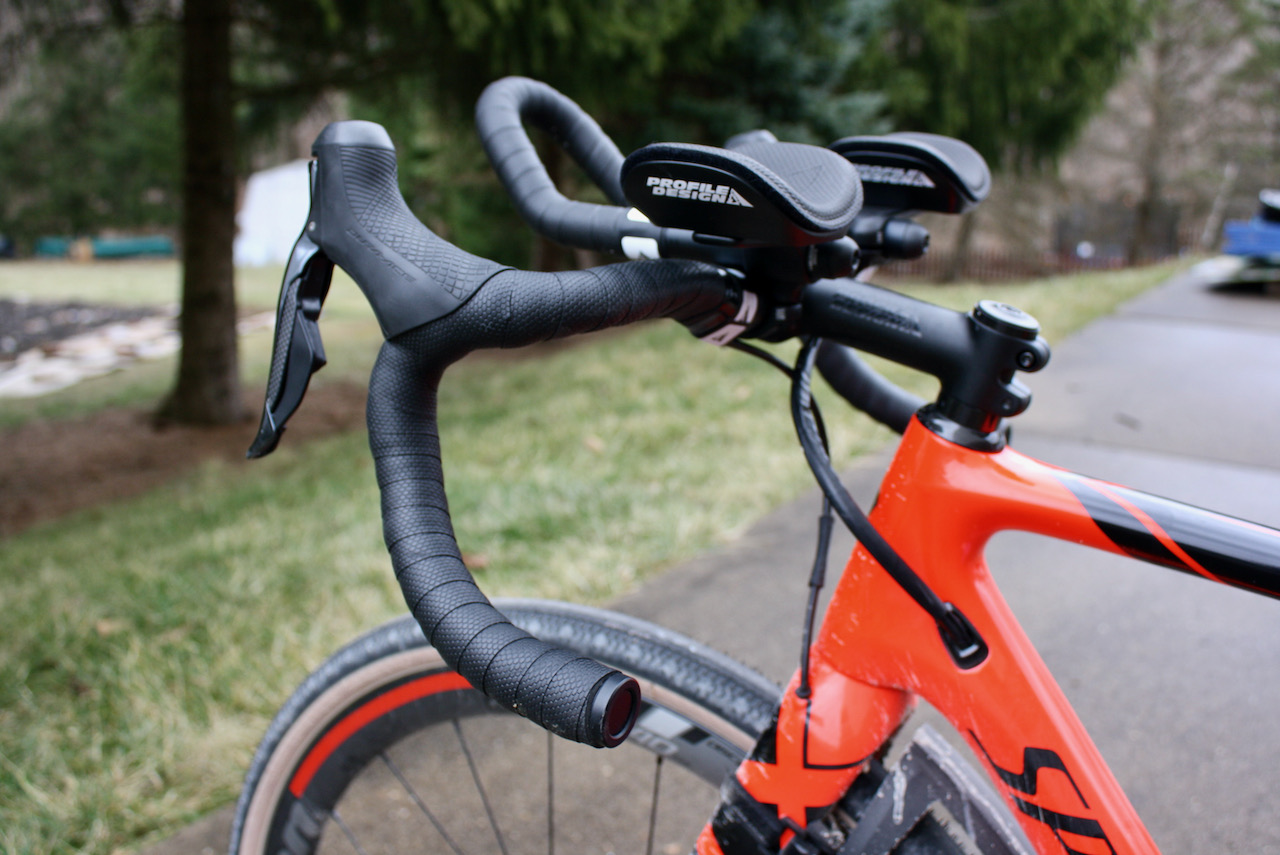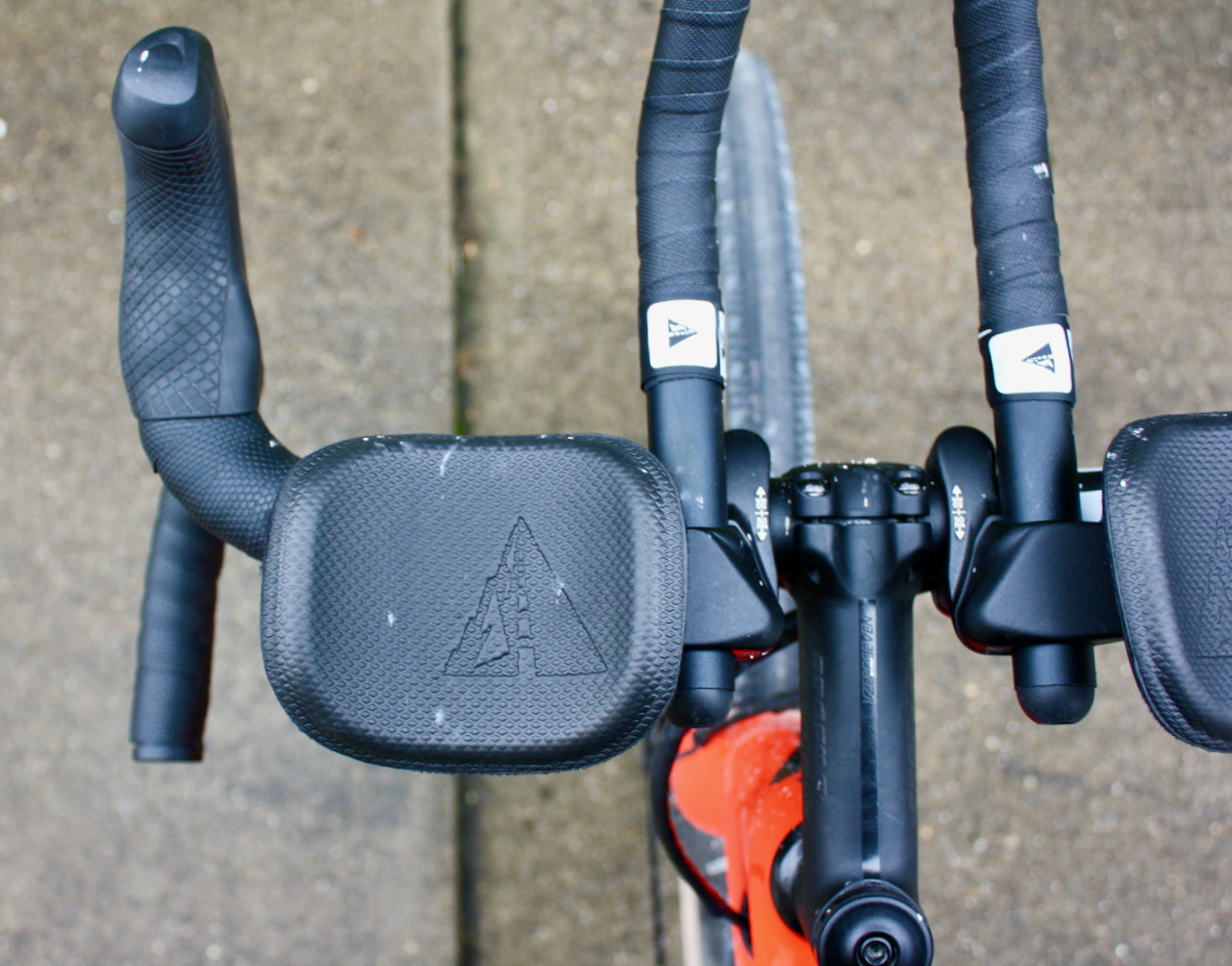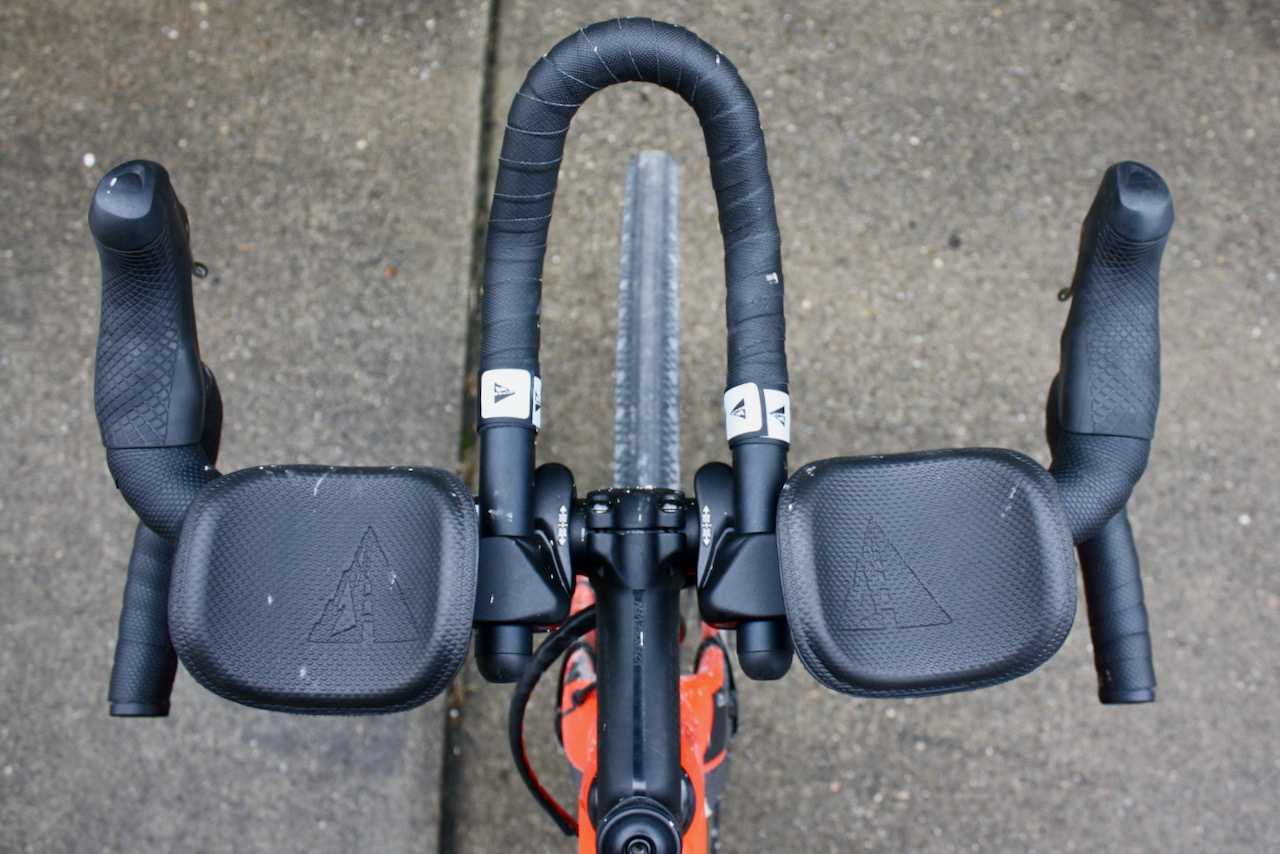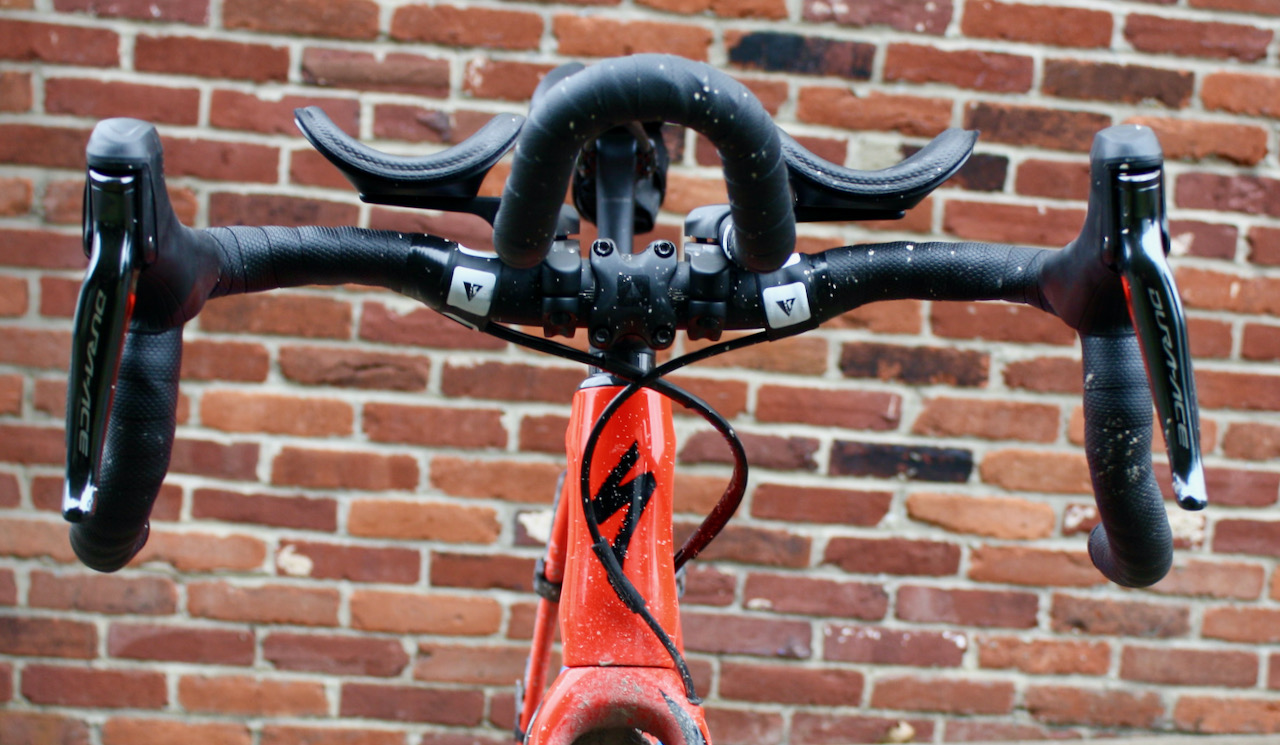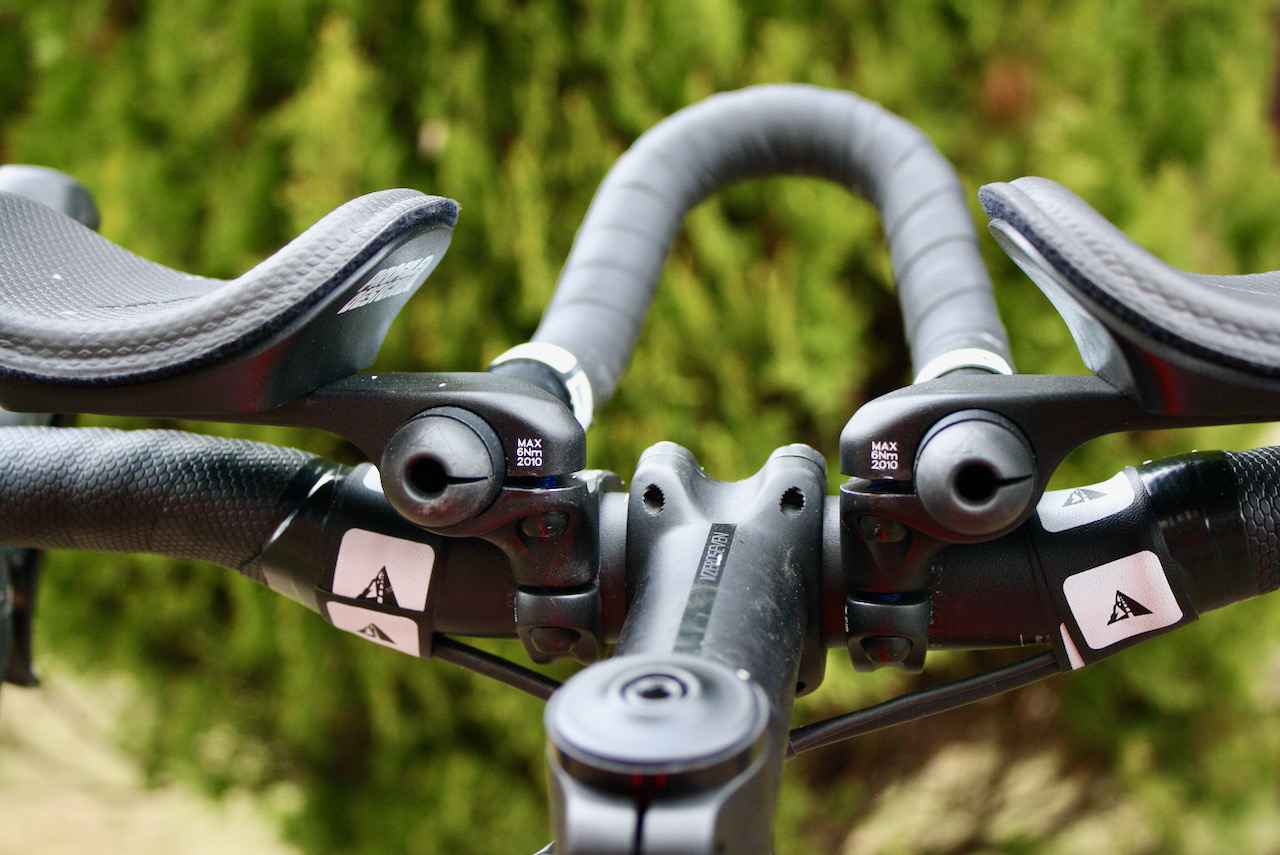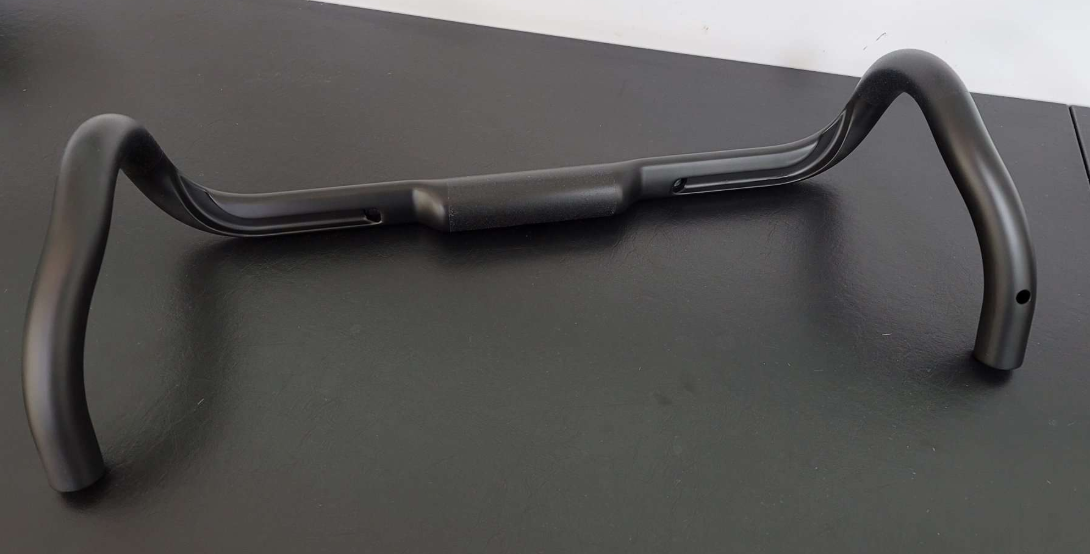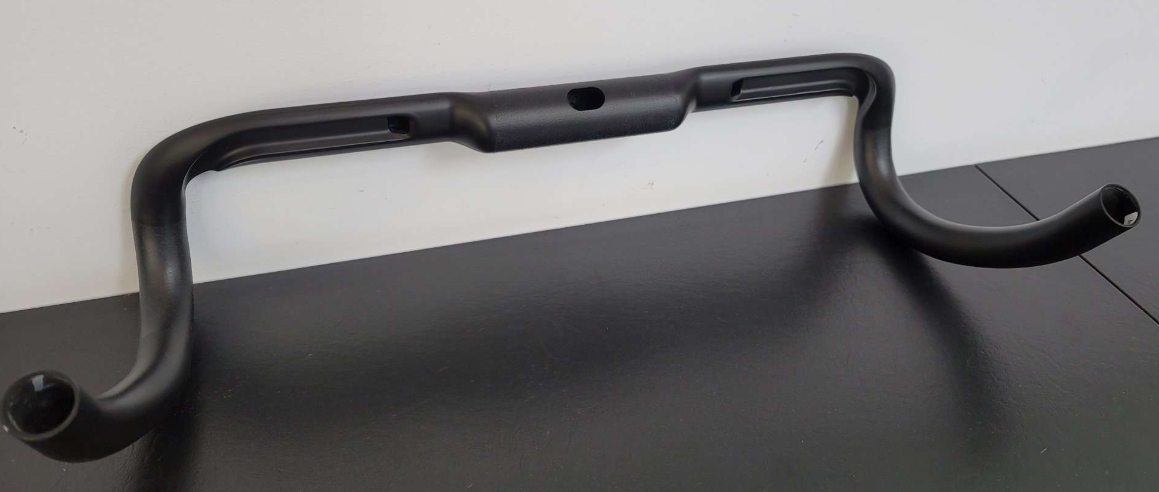There’s been a lot of talk about handlebars lately — from construction to hand placement to all-out breakage. No matter your gut feeling, handlebars are getting more specific for the ride and rider. One racing realm that has stayed away from the UCI is gravel and adventure racing. Mostly because there isn’t a World Championship (yet), and the sport is so freeform that I believe it would be hard to have one.
Gravel’s unsanctioned nature gives handlebar manufacturers the freedom to create, explore and redefine ways to keep our hands comfortable over miles of pebbles. This has lead to wider, sculpted, flared bars all over the world. Profile Designs is looking past the wider trend, and taking aim on reinventing the way handlebars are sized for each rider.
When most people hear Profile Designs, they think of aero bars, aero bottles, aero wheels — tarmac terrain, roadie stuff. Recently, they dropped the DRV/GMR gravel bar with a progressive shape, designed to work seamlessly with the company’s new Neosonic-45 aero bars and its new DRiVe fit system.
What is DRiVe?
Profile Designs describes DRiVe (Drop Reach Variant) in this way: “A measurement is taken via a 73° line beginning at the bar bore. The DRiVe metric pinpoints the line’s intersection with the drop.”
The concept behind the DRiVe feature is that it provides a better fit without changing critical touchpoints. David Bowden of Speed Theory NZ helped with the design and laid down the general ethos in our conversation. “The overall premise of DRV is that, as people get taller, everything gets larger (generally) — this field is known as Allometry. So the smallest DRV (105mm) size has the least reach and drop and is available in the smaller widths. The next size (120mm) increases drop and reach to give more room for larger hands and is available in wider sizes.”
What does that mean in basic bike terms?
The DRiVe is the location on the bars where you, as a rider, will instinctively place your hands. The idea isn’t new, but paying more attention to this detail is becoming more common. The goal for the position is to put the rider in the best place for power, handling, and hand comfort.
How did Profile Designs incorporate this into the DRV/GMR bar?
The DRV/GMR bars come in a variety of measurements. You still pick the standard width that you like, but you have a ‘Drive & Drop’ size to dial in the hand position.
When creating the DRV/GMR bar, Profile Designs took this metric very seriously. Most gravel bars (that I’ve ridden) flare out from the drops directly. This abrupt change takes the brake levers and places them in an awkward position — pointing them inward and compromising comfort and handling for the rider. The DRV/GRM bar takes the top of the bars, similar to a traditional road bar (except for the added 9mm rise), and flares the drops out about halfway down.
How do you find your drive?
Profile Designs uses its DRiVe measurement system to take the rider’s overall hand width and calculates it into the perfect DRiVe size. Since the general idea of DRiVe is to give options to the rider, this tool only changes the DRiVe size and not the bar category one should ride. If you’re interested in your DRiVe size – check out the guide here found under the guide the sizing tab at the Profile Designs.
Profile Designs DRV/GMR Drive & Drop vitals
- Size: 105 (36, 38, 40, 42cm *tested) or 120 (40, 42, 44cm) (center to center)
- Reach: 105 (70mm) or 120 (75mm)
- Rise: 9mm
- Clamp Width: 100mm
- Clamp Diameter: 31.8mm
- Drop: 105 (121mm) or 120 (137mm) (drop from top center)
- Drop Width: 105 (438, 458, 478 or 493mm) or 120 (480, 500 or 520mm)
- Drive: 105 or 120mm (drive from bar center)
- Weight: 290g (42mm tested)
- Price: $91.00
DRV/GMR Bar Impressions
I installed the Profile Designs DRV/GRM bar on my gravel/cross/everything rig. I’ve had the same 42cm short, shallow bar on this particular bike for many seasons, and I was sure I’d notice a difference right away. Unfortunately, I noticed a difference right from the start, as the DRV/GRM does not have an internal routing port, making it a bit difficult to install. Considering this is a $91 alloy gravel bar, and one of the most popular groupsets (GRX Di2 would be fitted on it), the lack of foresight was a bit unnerving. But after a quick drill, hone, and sand, I was all cleared to install the DRV with my Di2 setup. For Di2 builds, you’ll probably want to wait for the potential carbon version (below).
I chose the 42cm bar with 105mm drop and 70mm reach — something similar to the bar I was riding and also fit within the Profile Designs DRiVe system for my liking. I usually install my levers a bit higher for driving on the ‘cross course, but I went with a level setup from the start. I kept the same 120mm stem and spacer stack I usually ride on my bike and noticed the short reach and 9mm rise from the first pedal stroke. Why 9mm, you ask? Well, 9mm is the maximum rise the bar can have while still maintaining aero bar compatibility.
The subtle rise is enough to open up the hip angle a little and take some tension off the lower back — something that’s crucial when grinding on endless gravel or bike packing.
Profile Designs moved the flare to the portion of the bar after the shifter blade ends. This shaping gives the rider an excellent hand feeling on the bars, with a big flare for the drops.
Changing bars is a huge deal for most riders; I usually take days to get a bar at just the right angle. The DRV/GMR bars took much less time to fine-tune and adjust. Maybe this is because of the laid-back nature of the design and exaggerated drops, but I feel the familiar hand position and short-reach helped immensely. The bar placed me in a less aggressive posture, with the ability to more effectively drive the bike off-road and feel comfortable on gravel.
The DRV/GMR has decent compliance for an alloy bar, but I wouldn’t consider the bar flexible or compliant for rocky roads. The drops seem to have a bit of flex, but when you’re riding a 48mm tire, that compliance could be from anywhere.
Neosonic 45ra Aero Bar Impressions
The other piece to the DRV/GRM puzzle is the aero bars attachment — the Neosonic 45A. Profile Designs is very well known for its clip-on aero bars, which may be the most popular in the category.
The Neosonic/Ergo/45ra aero bar offers a comfy, approachable aero bar package that suits road, gravel, and bike packing. Though the idea of aero on a gravel bike is highly contested and debated, one thing is for sure — comfort on gravel and long or multi-day events is paramount. Looking over the Neosonic 45ra, I believe that comfort and efficiency were at the forefront of design. However, if you dial in the position and train in the tuck, you will undoubtedly shave some time off your ride.
Profile Designs Neosonic/Ergo/45ra Vitals
- Armrest Offset: -95mm to -42.5mm in 7.5mm steps
- Armrest Width: 124mm to 290mm in 18.5mm steps (With Extensions at 100mm)
- Armrest Stack: 59mm (no riser kit) to 130mm in 5mm increments (With aftermarket Riser Kit)
- Extension Width: 100mm
- Handlebar Clamp: 31.8mm
- Extension Clamp: 22.2mm
- Weight: 563g
- Price: $161.00
Adding extra weight to a bike is not always a good thing, but when it adds comfort and efficiency, that weight is essentially negated. However, 563g is hard to outright ignore.
Installation and setup are straightforward; the bar has few adjustments to make things overwhelming. Those looking to maximize power production fully would be served best with a bike fit, preferably by one with experience in the triathlon or time trial community.
I went with a very conservative setup in hopes of not having to move the tilt of my saddle, and it worked. Riding in the aero position took some getting used to. Admittedly, I’ve done very little time in the tuck, so I was prepping for lower back pain but the position feels natural. The padding on the armrests is plush, soaking up small bumps and knocks in the gravel, and the curved top is easy to grip and steer. The bars only came a few inches from the end of my shifters and didn’t interfere with the bike’s functionality. Although, I did have to take off my handlebar snack bag… all for aero, I guess.
The idea of riding on aero bars in a less than super smooth environment made me weary. But I faced my fear —double-checked my torque setting and hit the chunky country gravel for some hammer time. The feeling is oddly comfortable while cruising through the chipped gravel in an aero position. I let the wide-open sections of gravel road have it, and I hammered away. The width of the Neosonic gives some pleasant steering sensations. I felt sturdy and not out of control when navigating around a slight bend or road obstacle.
After pedaling longer in the aero position, I opted to move the pads back toward myself — I found this gave my forearms more support. The padding helps a bunch. Being able to sink into the pads took the pressure off my lower back and let me roll easily. I added some of Profile Designs’ Aero Bar Tape to the bar, which I found helps my sweaty hands from slipping around. The only thing I was left wanting was a computer mount. I ending up strapping my Garmin Forerunner to the bars for most rides. This was due to convenience/laziness on my part — there are many mount systems available, and you should get one with your aero bar purchase first thing as the NeoSonic 45a does not come with one.
The whole package
The whole package works very well together, and the overall vision is clear to see. The Neosonics addition doesn’t make this a full-on race aero setup, but more of a comfort-enabling performance system. The bars’ multiple hand locations are fantastic, but when you add the Neosonic, you add so many more options to keep you comfortable on long races, gravel adventures, or when touring.
When I had Neosonic aero bars installed, I missed being able to place my hand on the tops of the bars when climbing, especially on hard pitches. I found myself mostly keeping to the hoods, but in some back-breaking awkward moments, I awkwardly put my hands on the pads and wrenched onward. I’m sure I could eventually get used to this feeling, but on hard sustained climbs, my default position is on the tops.
After riding the whole system, many miles in, my favorite feature is the drops. Wow, these feel great — like a mix of attack readiness and I can ride here all day. The fact that the flare doesn’t affect the lever position is huge — it’s like two bars in one.
Could we see a carbon version in the future?
Sometimes a new design in alloy means that a carbon race-ready version isn’t too far off. We’re not saying that’s 100%, but we did get a sneak peek of some prototypes in testing.
Pictured is the “DRVc” (carbon), a full carbon version of the DRV bar. From what we hear, changes include an increase in the tops diameter, along with the drop and reach as you move up the DRV sizes. This customization takes the concept of scaling the component size for the rider to the max. There is a cable entry hole at the end of the channel, which you can see in the image.
We’re guessing this channel is to run full internal hoses and wires if needed for the stem/headset. The big channel looks to avoid extreme bends out of the shifter port, which is super annoying when routing a new bar.
Conclusion
The Profile Designs DRV/GMR bar and Neosonic aero bar are a significant upgrade or addition to your gravel-adventure setup. They both function well independently, but the full package is a mix of comfort and power when you need it. The price is premium for aluminum; $91 for the DRV/GMR bar and $161 for the Neosonic, and the bars are not Di2 plug and play ready. But the unique ergonomics and potential for increased comfort may make them worth the price of admission.
